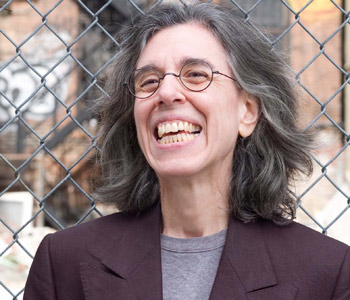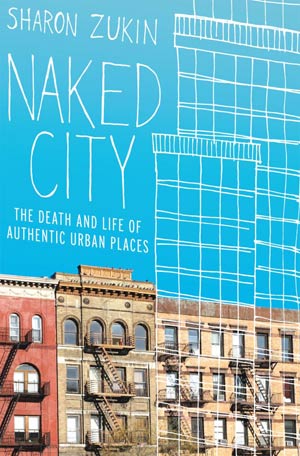
Are cities losing their soul? Stroll around the center of the world’s great cities, and you see the same gentrified neighborhoods, certified historic buildings, spectacular skyscrapers and new modern art museums. On the waterfront you find deserted warehouses next to loft-apartments. Cafés and boutiques are standout destinations in shuttered factory districts that now represent the epicenter of cool. This Destination City is attractive to tourists, calmed by shopping and secured by private guards. But it’s a city that has lost its edge of difference, its authentic character, what some people call its “soul.”
Like other cities from London to Shanghai, New York has gone through these identity changes during the past thirty years. Despite a chronic fiscal crisis and the current economic recession, the city has filled the uneven gap between grit and glamour, sprouted manicured public parks controlled by private business districts and brought white residents, mostly college graduates, to neighborhoods that used to be dangerous and unappealing.
A chain store invasion has turned the city into a continuous network of Starbucks, Chase Bank branches, Rite-Aid stores, and H&Ms. Declining crime rates and rising careers in finance and media encourage new people to make all of New York their own. In the process, though, many longtime residents have vanished and much of the city’s authentic character has been transformed.
My book focuses on the power of authenticity as an urban ideal. Naked City visits Greenwich Village, Harlem, and the Brooklyn waterfront to show how New York’s working-class neighborhoods and “dark ghettos” have been transformed by entrepreneurial hipsters, gentrifiers seeking their roots, aggressive real estate developers and mayors, and government grants. But we also uncover new terroirs where cultural identities are forged: public ball fields where Latino immigrants sell the foods of their homelands, a locavore farmers’ market, and a community garden in one of the city’s poorest neighborhoods.
This journey poses two big questions. Is the idea of authenticity only a means of preserving a city’s elite cultures? Or can it be used to ensure everyone a right to stay in the place where they live and work?
“Is the idea of authenticity only a means of preserving a city’s elite cultures? Or can it be used to ensure everyone a right to stay in the place where they live and work?”
These broad questions of authenticity and displacement challenge the political, cultural, and economic habits of city dwellers all over the world. But Naked City is also a very specific book about New York. I argue against both sides of a power struggle that has shaped New York City during the past half-century: the struggle between the corporate city and the urban village.
The corporate city is identified with the slash-and-burn urban renewal policies and massive highway construction overseen by New York’s public-sector urban builder Robert Moses from the 1930s to the 1960s. Moses was notorious for imposing his plans on a captive public through his adroit use of an overbearing bureaucracy and government funds.
The urban village refers to a different experience: the small-scale social life of neighborhoods and community autonomy. First described in a study of the West End of Boston, an Italian-American working class community, by the sociologist Herbert Gans, the urban village is closely connected with the writer and activist Jane Jacobs, who worked with community groups in Greenwich Village to defeat Robert Moses’s last big plans in the late 1950s and early 1960s.
Revered for her common sense vision of the city, Jacobs wrote about “the ballet of the sidewalk” and the intimate life among strangers on the streets—local residents, store owners, and workers. Radical at first, in contrast to Moses’s power, Jacobs’s view has gradually become more influential. In fact, this is the lifestyle vision of both gentrifiers and contemporary city planning commissioners, an aesthetic ideal of authenticity that consumes both the neighborhood and its longtime residents.
Of course the corporate city and the urban village are idealized landscapes, tropes for opposing “good” and “evil” values. Nevertheless they inspire real aspirations and behavior, and these become ways of using the city to promote one group’s advantage over another’s.
I think I have always had a passion to discover the “authentic” city. And it has been honed by living in New York during the period Naked City describes.
First coming to New York as a college student, and remaining through three decades of teaching and writing, I have been both exasperated and enchanted by the city’s gilt and dross, brutal honesty and flagrant self-promotion and ability to inspire dreams. I don’t want to be nostalgic for a city that never was. But I find a more attractive modernity in the noir image of the city, the post-World War II, black-and-white street scenes of Weegee’s photos and Jules Dassin’s film Naked City, with its diners, tenements, taxis, and even offices. Can city life be better without displacing the poorest residents and turning the streets into an urban shopping mall that looks like every other place on the planet? Can we consume the city without destroying it?
I know that “authenticity” is a chaotic concept. Many people say you cannot even talk about cities as authentic because they are constantly changing. New York especially has been tearing down and building up at a rapid rate at least since the 1850s. But the idea of authenticity has an undeniable cultural power. It has a real effect on our attachment to our neighborhood, on the stores where we like to shop, on the way we see some places as interesting and others as unworthy of our attention as cultural consumers.
Not surprisingly for a book about consuming authenticity, a lot of the writing revolves around food. Food is the new “art” in the urban cultural experience. This is true not only because of the enormous growth in the number of restaurants during the past thirty years—from standardized fast-food franchises to the luxurious lairs of high-class chefs and diners—but also because of the dramatic rise of food preparation as a pole of cultural creativity in the urban economy.
New entrepreneurs in Brooklyn have reinvented the borough’s late nineteenth century food industries for today’s foodies and hipsters. Micro-breweries and omnivore butchers are not only re-creating a precious kind of artisanal production but also an authentic culture industry true to the borough’s roots.
Readers who open the chapter on “How Brooklyn Became Cool” will trace how the entrepreneurial paths of Pierogi art gallery (named in honor of the area’s Polish residents), L Café, Galapagos Artspace, Brooklyn Brewery, and the clothing company Brooklyn Industries in Williamsburg transformed this old industrial and working class neighborhood on the waterfront into a new center of cultural production and consumption.
In contrast, “A Tale of Two Globals: Pupusas and Ikea in Red Hook” deals with Swedish meatballs and Salvadoran pupusas. The recent much-heralded arrival of the multinational Swedish chain store in New York City contrasts with the trials of a small group of street vendors from Mexico and Latin America who have sold the foods of their countries in this neighborhood for years.
Both Ikea and the Red Hook food vendors fought to occupy their places: Ikea, with an army of executives, publicists, and lawyers who argued for the jobs and shopping opportunities the store would bring to New York City, and the food vendors, with supporters drawn from local foodies, bloggers and elected officials, including U.S. Senator Chuck Schumer, a Brooklyn resident. Though the vast majority of New York’s street vendors are immigrants who do not prepare native cuisines other than American hot dogs, and lack power to fight their way through the mass of regulations set by the city’s bureaucracy, the Red Hook food vendors mobilized enough support to become a permanent fixture in the ball fields.
A sidewalk café in Harlem, a farmers’ market in Union Square, and a community garden in East New York round out the picture of how important food production and consumption have become to the city’s recent transformation. These are not just trendy consumption spaces, they are new urban terroirs.
“I have been both exasperated and enchanted by the New York City’s gilt and dross, brutal honesty and flagrant self-promotion and ability to inspire dreams.”
Naked City argues against destroying the diversity of urban centers by gentrification, chain store invasion, and the kind of upscale redevelopment that makes all places look the same. Both updating Jane Jacobs’s vision of urban life and criticizing its failure to confront the power of investors and developers, the book enters the still-raging debate between those who want to build big, in Robert Moses’s style, and those who want to preserve the “authentic” city of neighborhoods and local identities.
Using “authenticity” to fight for space is dangerous. It risks elevating one group’s interests and visions above all others. But economic arguments in favor of controlling rents and preventing the disappearance of independently owned stores have little political traction. If we organize to protect the cultural value of social diversity, we may have a better chance of enabling people to stay in their neighborhoods, their jobs, and their homes.
The twenty-first century city need not stand on the ruins of older forms of urban life; neither should it displace the twentieth-century urban population. Creative destruction of a certain amount of the city’s physical fabric is inevitable and even desirable. But the city’s social fabric must be nourished and preserved.


Sharon Zukin is professor of sociology at Brooklyn College and the Graduate Center of the City University of New York. Naked City completes her “New York trilogy,” following Loft Living (1982, rev. ed. 1989) and The Cultures of Cities (1995). Her book Landscapes of Power: From Detroit to Disney World (1991) won the C. Wright Mills Award; she is also the author of Point of Purchase: How Shopping Changed American Culture (2004) and the co-editor of After the World Trade Center (2002), among other books. In 2007 she received the Robert and Helen Lynd Award for career achievement from the community and urban sociology section of the American Sociological Association.